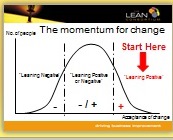One of the hardest career steps that many of us take is the very first – becoming a Team Leader or First Line Manager. One day we’re happily part of the team, next day we’re leading it.
Without the right training and support it can be a tough place to be. Because we lack knowledge, skills and direction we often veer off into one of two directions – “Nasty” or “Nice”:
NICE: Some of us are keen to remain friends with the team members so we try a little too hard, maybe not put too much pressure on getting things done, maybe turn a blind eye to some of those things that we were doing yesterday.
Result: team members may like us but we’re seen as an easy touch, maybe a “pushover”. Some folk take advantage of us so we lose respect and it becomes harder to get the job done.
NASTY: Some of us go the other way – “I’m the boss now – no more mister / ms nice guy!” We stamp out all of those little perks, cheats and short-cuts that we were doing yesterday.
Result: team members see us as unreasonable, a “dictator”. Some folk actively work against us so we lose respect and it becomes harder to get the job done.
For me, one of the hardest lessons to learn – and one that I tell every new Team Leader or Manager – is this: “Don’t expect to be liked!”. Hence my second piece of advice – “If you want to be liked, get yourself a dog!”
What you can – and should – expect is to earn the respect of those that you work with. To become a good Team Leader you need to understand what’s going on here, and what to do about it.
Let’s look at two aspects of how we manage the team –
- Challenge – how much do we expect from team members?
- Support – how much help do we give them?
In the first example. we’re all support and no challenge so we’re an easy touch.
In the second example we’re all challenge and no support so we’re a dictator.
But we don’t have to choose between the two – it’s not an “either / or” choice.
What we need to do is both – always challenge people to be the best that they can be, and at the same time help them achieve their goals.
Result: better outcomes, happy team and well-respected, effective Team Leader! … and your dog will still love you just the same 🙂
Andrew Nicholson is Managing Director of ImproveMyFactory.com, and regularly coaches Team Leaders and Lean Leaders to achieve more than they thought possible.




